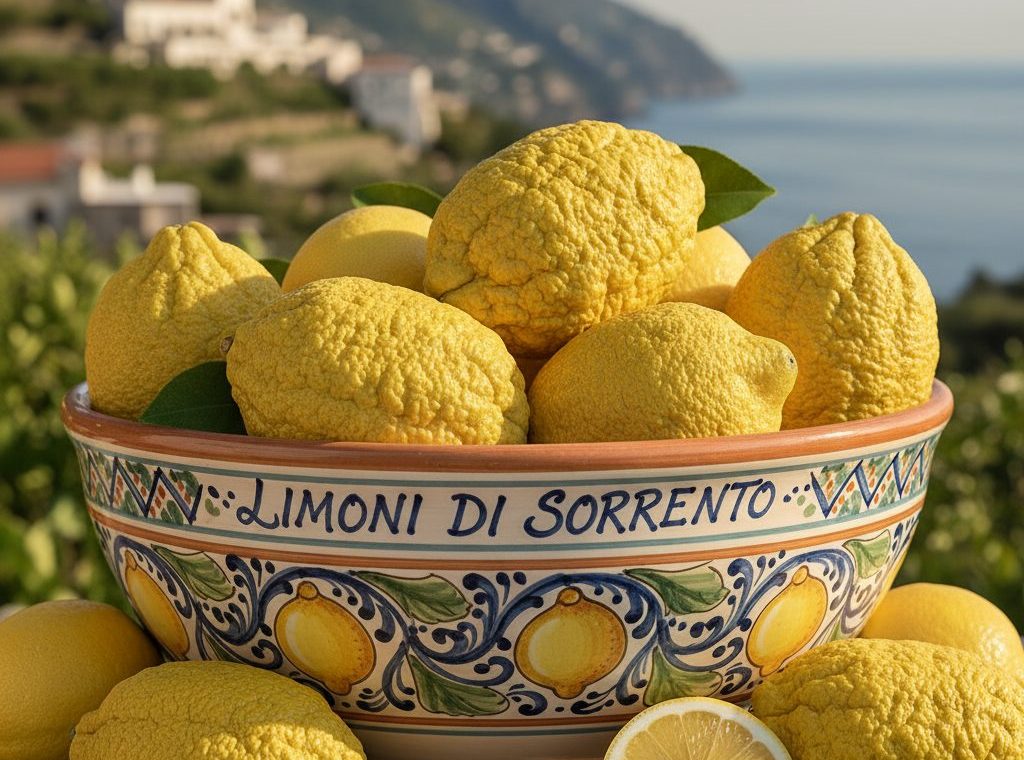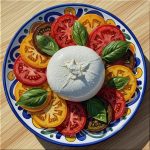When we think of the Sorrento coast, in addition to its breathtaking views of the Tyrrhenian Sea and its picturesque alleys, the fresh and vibrant aroma of Sorrento lemon immediately comes to mind. This citrus fruit is not just a simple ingredient, but a true emblem of the gastronomic and cultural tradition of Campania, especially Naples and its surroundings.
Origin and characteristics of the Sorrento lemon
The Sorrento lemon, also known as Limone di Sorrento IGP, is grown on the Sorrento peninsula and on the island of Capri. Its peel is thick, deep yellow in color, and releases a very fragrant essential oil. The pulp is juicy, with a perfect balance between acidity and sweetness, making it a versatile ingredient for both sweet and savory recipes.
This lemon is not only appreciated in the kitchen, but is also protected by the Protected Geographical Indication (PGI) certification, which guarantees its quality and authenticity.
Why is Sorrento lemon different?
1. The microclimate of the Sorrento Peninsula
- The cultivation area is protected by Vesuvius and the Lattari Mountains, which creates a temperate and humid climate.
- The sea breeze and the large amount of sunshine make the fruit grow with more juice and larger size.
2. The traditional cultivation system
- Sorrento lemons are grown under chestnut pergolas covered with reed nets(pagliarelle).
- This method protects the trees from the wind, conserves moisture and prolongs ripening time, which causes the lemon to grow more slowly and acquire a larger size and thicker skin.
3. Unique characteristics of the fruit
- Size: larger than a common lemon (sometimes almost like a small orange).
- Peel: thick, rough and rich in essential oils, which gives it an intense perfume.
- Flesh: very juicy, with a balanced flavor between acid and slightly sweet.
- Aroma: fresher and more persistent than other lemons, ideal for confectionery and liqueurs.
4. Certification and prestige
The Sorrento lemon has the Protected Geographical Indication (PGI), which guarantees its origin and quality. This differentiates it from other common lemons, which do not have the same cultivation requirements or the same taste.
Lemon in Neapolitan cuisine
The use of lemon in Neapolitan cuisine goes far beyond being a simple garnish. It is a true protagonist of dishes that reflect the identity of the region:
- Limoncello: The famous digestive liqueur is made by macerating lemon peel in pure alcohol and then adding a syrup of water and sugar. Originally from the Sorrento coast, it is today one of the most representative products of Campania.
- Traditional sweets: Sorrento lemon is used to flavor pastry creams, babàs, delizie al limone and cakes. Its fresh scent brings lightness to even the richest desserts.
- Fish dishes: Its juice and zest enhance the freshness of oily fish, seafood and baked dishes, providing a citric touch that balances the flavors of the sea.
- Salads and side dishes: Lemon slices accompany sea salads, grilled vegetables and typical side dishes, enhancing the intensity of each ingredient.
More than an ingredient: a cultural symbol
The Sorrento lemon is part of the daily life of those who live in the region. It appears on hand-painted ceramics, in home decorations and in popular songs. Its presence goes beyond the kitchen: it is a symbol of hospitality and Mediterranean joy.
It is not just a fruit: it is a cultural and gastronomic heritage that represents Naples and its coast. Its versatility in Neapolitan cuisine, from sweets to sea dishes, makes it an essential ingredient that carries with it the essence of the sun and sea of Campania. To enjoy it is, in a way, to travel with the senses to the heart of the Mediterranean.
With love, your Neapolitan girl!




